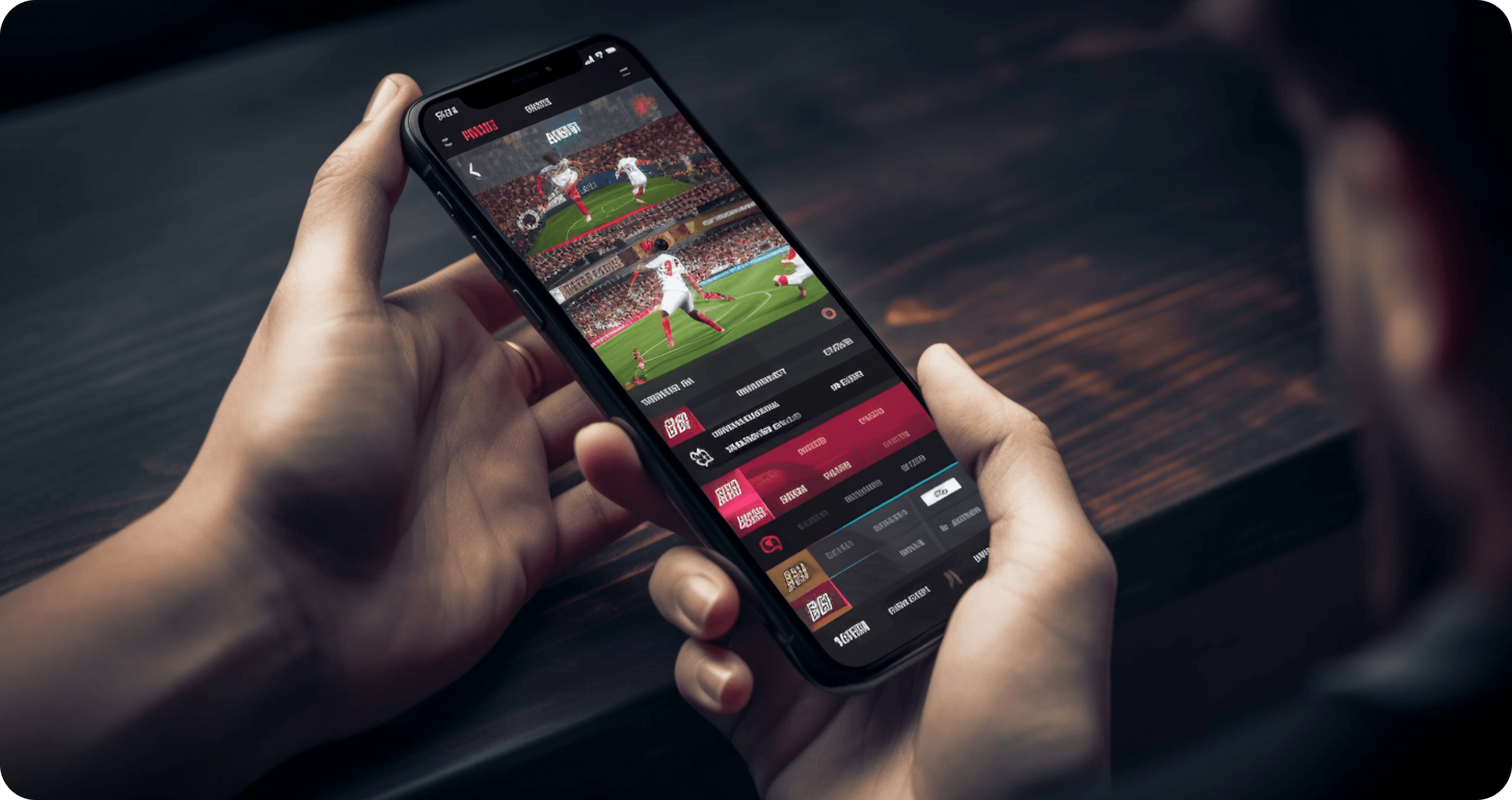Video streaming apps have occupied a major part of our lives, from binge-watching TV shows to live-streaming events. These platforms have fundamentally changed the way how we consume content.
In fact, the video streaming market is forecasted to grow at a CAGR of 8.27% during the period from 2024-2027, which means the revenues could reach US$137.70 bn by 2027; hence, it is quite an exciting opportunity for the companies.
Developing a video streaming application means entering into an already profitable industry. However, success needs careful planning and proper execution to make your video streaming application capable of entertaining your target viewers.
Here are some steps of video streaming app development you will go through in developing a good quality, scalable video streaming application that will always satisfy your target audience.
How To Build a Video Streaming App
Building a video streaming application (basic, medium, or advanced) requires planned and clear thought on the technical and business fronts. Here are a few common steps one can follow:
Step 1: Choose Your Business Strategy and Audience
You have to know your target audience and understand the business model; it's the very groundwork for planning any successful app.
Business Model
Decide on how your app will make money. Here are some of the methods of monetizing:
- SVOD (Subscription Video On Demand): Users pay a regular fee for unlimited access (Netflix).
- TVOD (Transactional Video On Demand): Users pay for content on a pay-per-view basis (e.g.: Vimeo)
- AVOD (Advertising Video On Demand): Content is free to the user but supported via advertising (YouTube, Peacock).
Knowledge of Target Audience
Nothing works without you knowing the essence of the target audience you are serving. Are you focused on casual viewers, movie gentry, sports worshippers, or another niche audience? The business model you will determine must resonate with your audience's likes and actions.
Step 2: Essential Features for Streaming App Development
For your app to stand out among the crowd, it is important that you enter with the least number of key features. These essential elements will keep users engaged and returning to your platform.
- User Profiles with Kids Mode: Enable users to create profiles, including a Kids Mode for restricted content and child-safe viewing.
- Advanced Search: A powerful search engine that filters the contents on genre, popularity, or even mood should be incorporated.
- Offline Viewing: Allows users to download content to view it offline.
- AI/ML Integration: Artificial intelligence and machine learning integration will provide video recommendations based on the video-viewing behavioral pattern.
- Cross-Platform Compatibility: The application should be accessible on every device—smartphones, tablets, smart TVs, and desktops.
- Video Players with Advanced Features: Offer features like resume playback, bookmarking, and starting over from previously watched sections for a seamless user experience.

Step 3: Choosing the Right Technology Stack
Choosing a proper technology stack is critical to ensure smooth performance and scalability. Here's a breakdown:
- Frontend Technologies: React Native, Flutter, or Swift—for iOS—and Kotlin for Android—are popular for building native mobile apps. These ensure fast and responsive interfaces.
- Backend Technologies: Some common backend frameworks are Node.js, Python (Django), and Ruby on Rails. These handle requests from users and facilitate seamless video playback.
- Cloud Storage & CDN: Integrated Content Delivery Network; for example, Amazon’s CloudFront or Akamai ensures fast video replaying, no matter where the viewer is located. For that, we have to keep thousands of videos, hence even backup in cloud resources such as AWS & Google Cloud resources.
- Performance and Scalability: You want to architect your backend so that it will not crash with 1000 or 1000000 users. That’s where load balancing and microservices architecture come into play.
- Service-Driven Architecture: Adopt a service-driven architecture for dynamic customization. For instance, design the home page layout as a service, allowing updates without needing a full app update.
Step 4: Creating a Robust Backend Architecture
Backend services are the backbone of your video streaming app development services. That makes sure the video is delivered smoothly and provides the best experience to the users.
- Video encoding and adaptive bitrate streaming: Video encoding prepares video files to play on different devices. On the other hand, adaptive bitrate streaming modulates the video quality according to the internet speed of the user. This also allows for reduced buffering and smooth playback, even on low-speed connections.
- High-Speed Video Delivery: Use server optimization to minimize latency. For example, edge servers closer to the user’s location can reduce loading times and improve streaming speed.
- User Authentication and Security: Protect your content and users' data. Use OAuth for user authentication, and ensure that video content is securely delivered with encryption.
Step 5: Make User Experience and Design a Priority
A great UI and UX will make your video streaming app development process a success. Here's how:
- Initial Navigation: Let users find things at minimal toil. Menus need to be intuitive so things can be found easily.
- Branding and Design Consistency: Maintain a consistent look and feel across the app. This aids in creating brand identity and trust among users.
- Accessibility: One can help disabled users by giving options for subtitles, audio descriptions, color, contrast, etc.
Step 6: Security and Compliance Implementation
Security is a critical aspect of video streaming. Safeguarding your content and user data not only builds trust but also ensures the long-term success of your app.
- Digital Rights Management (DRM): To prevent piracy and unauthorized distribution, consider integrating robust DRM solutions. These tools prevent the unauthorized copying or distribution of one's content.
- GDPR Compliance: If your area of operation contains EU (European Union) or have users from the EU, then your app should be GDPR compliant. That means, obtaining users explicit consent before collecting any data and giving users extended control of what they do with their information.
- Payment Gateways: Secure payment gateways are needed if your app supports in-app purchases or subscriptions; these should be at par with industry standards for PCI compliance, whether Stripe, PayPal, or another.
Step 7: Quality Assurance
Cross-device and network testing is essential to ensure your app delivers a consistent experience wherever it goes.
- Load Testing: It will mimic the peak user traffic to ensure your infrastructure can handle thousands of simultaneous users.
- Cross-Device Testing: This means an app developed by you must work swiftly and smoothly on every device—from smartphones and tablets down to smart TVs.
- Bug Fixing: Finding and fixing bugs before the launch is necessary. Regular updates and patches will keep your app going smoothly after the launch.
Step 8: Launching and Marketing Your Application
Lastly, once your app is ready, the last step is to launch. A successful launch can set the tone for your app's future.
- Launch Strategy: This could be created via social media, teaser videos, and beta testing. When only a few have access to exclusive content or early releases, it gets people talking and generates excitement.
- Digital Marketing: Consider visibility enhancement strategies like SEO, influencer marketing to capture a wider audience, and paid targeted advertisements to attract the right users.
- Gathering Feedback: After launching, user feedback must be collected. Reviewing and analytics will provide details about what the app needs to change.

Step 9: Using Data Analytics for Continuous Improvement
In the current scenario of competitive video streaming, analytics data plays a huge role in making your applications keep up with user expectations. These enable one to make well-informed decisions regarding content and technical optimization options.
- Tracking User Behavior: Metrics such as session duration, frequently watched genres, and completion rates of videos can help identify trends and user preferences.For example, if a specific genre consistently drives higher engagement, you can prioritize acquiring similar content. Furthermore, identifying where users disengage by analyzing retention data highlights potential UX shortcomings.
- Personalized Recommendations: AI-driven personalization is at the heart of successful video streaming platforms. By using machine learning, your app can analyze patterns in viewing history and preferences to suggest highly relevant content.
- Suppose a user watches a lot of sci-fi: The platform could offer movie suggestions in the same vein, making it feel more like a curated experience created just for them.
- Performance Metrics: Indicators, like buffering times and app crashes, often point to underlying backend issues. Resolve issues immediately, and your users will have a great experience and trust your brand more.
Expanding your video streaming app to a global audience requires thoughtful preparation to ensure a seamless and culturally relevant experience.
- Multilingual Support: Supporting multiple languages and subtitles ensures broader access, especially in non-English-speaking regions, where tailored localization can play a key role in increasing adoption.
- Local Content: Meeting regional tastes through content licensing or local production helps build lasting user loyalty. For example, securing regional sports rights or collaborating with local filmmakers can make your platform the preferred choice in various markets.
- Content Delivery Optimization: A smooth streaming experience globally depends on a robust Content Delivery Network (CDN). Partnering with established providers ensures fast and uninterrupted video delivery regardless of a user's location.
Scaling Your Video Streaming App For Future Success
Creating a standout video streaming app isn’t an easy feat, but with proper planning, choosing the right technologies, and executing well, your platform can differentiate itself in a crowded market.
Curious to learn more?
CodeDTX offers the expertise you need to build a dependable and engaging video app. Reach out to us today for your video streaming app development service needs!
The foundation of a successful streaming app isn't just technology—it's about developing a platform that users can count on and will enjoy using time and again.





